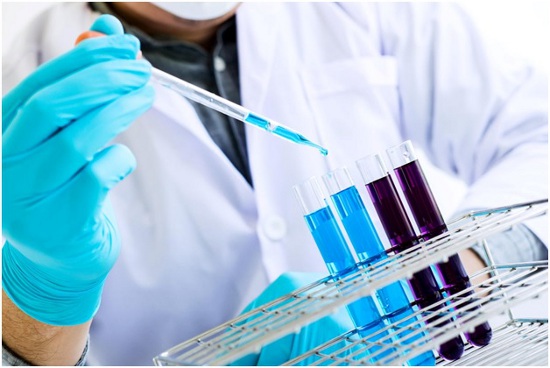When you purchase a DNA test kit, you will be given a set of instructions to follow to obtain a sample of DNA from your body and send it to the lab. You’ll be asked to either spit into a tube or wipe a swab inside your mouth.
Some people have trouble generating enough saliva for DNA tests while pregnant to do a spit test. If you have a dry mouth, you should try one of the cheek swabs tests. Another technique is to imagine lemons, the flavor of lemons, and biting into a lemon. Sometimes simply thinking about it makes your mouth salivate.
So, instead of imagining the bitter taste of lemons in your tongue as your face crinkles little from the acidic flavor and your mouth waters, let’s speak about some crucial facts you should know about the test and DNA test Laboratory.
1. Be Aware Of What DNA Testing Entails
DNA may reveal a lot about you. Assume you’re working on reverse-engineering the source code for a video game. You can infer that the game incorporates puzzle solving if you locate a function that solves a mystery. If you uncover a method in that code that allows you to leap and climb, the game may feature more action aspects.
DNA testing may achieve this by examining your DNA to see what “functions” it reveals in your genetic code. As a result, specific DNA testing can disclose health and lifestyle information.
Many DNA firms store DNA data from hundreds of millions of consumers with their client’s approval. Some DNA firms can detect if you share unique sequences by comparing your DNA against the DNA patterns of all those other DNA test participants, effectively confirming that you share ancestors somewhere in your family history.
This opens up one of the essential services provided by DNA testing companies: assisting you in understanding your family tree, ancestor movement patterns, and even identifying relatives you never realized you had.
2. Be Aware That DNA Testing Has A Dark Side
This also brings up one of the most troubling aspects of DNA testing: the consequences for privacy. Your DNA is, at its core, the source code for… you. It can be worrisome if DNA firms share that code, whether law enforcement or other corporations. It would be one thing if you permitted such sharing.
However, if a family member or cousin consented to the sharing of their DNA, they have virtually consented to the sharing of a significant portion of your DNA as well. That doesn’t even consider what happens if your testing service provider is compromised.
The other concern is those who took DNA testing and received unexpected findings. Several problems are at stake here, ranging from “misattributed paternity” to race, what you’ve been told as part of your family history, and distressing findings of your family tree. When some people examined their DNA services, they discovered some troubling results.
If you decide to go with DNA testing, keep these unanticipated effects in mind.
3. Understand How To Select A DNA Testing Service
Some DNA companies have just created a guide to assist you in exploring the offerings of several DNA testing services. In it, they examined how effectively different providers can assist you in learning about yourself through DNA. The size of each provider’s matching database is displayed. The more extensive the database, the more likely you’ll locate long-lost relatives if you’re seeking family information.
DNA testing employs some of the same information regarding health and lifestyle information. This is essentially a matching procedure, except that the test provider searches for matching features instead of seeking family members, namely genetic markers for certain diseases and behaviors.
4. Comprehend The Structure Of DNA
DNA is, at its core, code. The code’s sequence and combination offer instructions for producing organic stuff.
DNA segments transform amino acids into proteins. Proteins may accomplish various activities, including the formation of new cells. That is how amino acids become proteins; proteins become cells, cells become tissues, tissues become organs, and organs become humans, dogs, trees, cats, and so on.
Chromosomes are long strands of DNA. These chromosomes are passed down to children from both parents. The child’s DNA includes coding that symbolizes both parents’ qualities.
5. Be Aware Of The Limits Of DNA Matching
These chromosomes not only hold genetic codes, but they also contain a genetic fingerprint of the parents in each kid. As a result, two siblings born of the same parents will share a significant amount of chromosomal info.
Cousins exchange chromosomal info as well, although not as much. The fingerprint has been diminished in essence. Less and fewerDNA sequences will match as you proceed back in time to grandparents, great grandparents, and great great grandparents, and then along other branches of the tree to first cousins, second cousins, third cousins, fourth cousins, and so on.
You need to know a bit about chromosomes since you’re going to decide which sort of test to take. That’s what comes next.
6. Be Aware Of The Different Types Of Tests
In general, there are three types of tests: autosomal, Y-DNA, and mtDNA.
Autosomal testing is now the most prevalent. They can be given to men and women and tracked down via their ancestors.
The Y-DNA test is exclusively available to men and traces DNA back through patrilineal ancestors (from father to grandfather to great grandfather).
Because mtDNA is matrilineal, it allows you to trace your lineage back through your mother, mother, and mother.
Autosomal testing can provide accurate genetic information extending back four or five generations, and this can be performed as a DNA test while pregnant. Because Y-DNA and mtDNA testing are more concentrated on one side of the line, you can obtain further information, but with less information regarding family structure.
Which exam you take is dependent mainly on what you’re searching for. Don’t anticipate flawless precision. They can offer you hints, but a DNA test laboratory will not miraculously generate a history book of your family’s past.

















